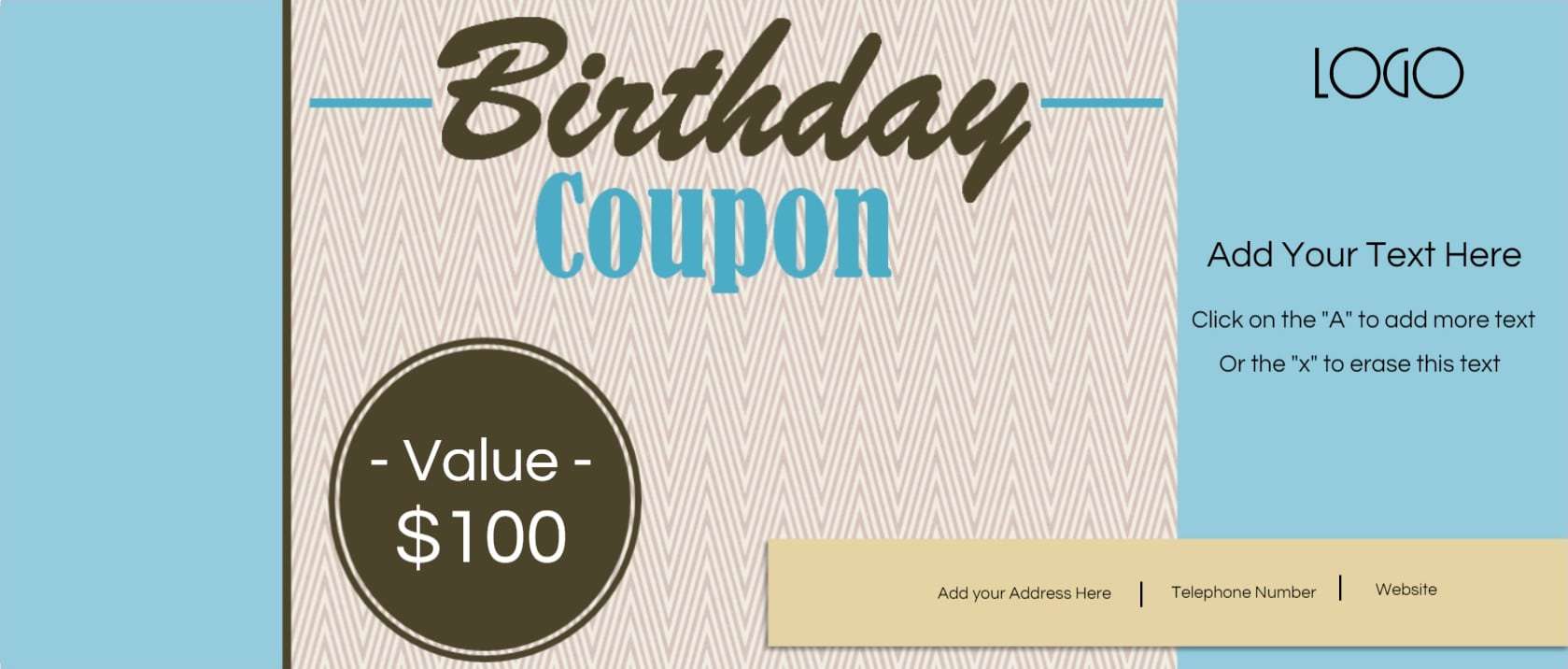
In today’s fast-paced retail environment, the allure of a great deal is undeniable. Discounts, sales, and coupons are powerful magnets, with an estimated 62% of U.S. consumers actively searching for and utilizing promotional codes when shopping online. These incentives, while fantastic for boosting sales and rewarding loyal customers, also open up a complex legal landscape that both businesses and consumers must navigate with a keen eye.
Just as a precision-engineered engine requires careful calibration, the world of promotional pricing demands strict adherence to regulations designed to protect consumers from misleading practices. The Federal Trade Commission (FTC) leads the charge on the federal level, complemented by individual state laws that often impose even stricter requirements. Understanding these rules isn’t just about avoiding legal pitfalls for businesses; it’s about empowering consumers to recognize genuine value and stand firm against deceptive tactics.
This authoritative guide will meticulously break down the critical legal considerations surrounding promotional pricing and the often-misunderstood right of businesses to refuse service. We’ll equip you with the knowledge to discern legitimate bargains from mere illusions and to understand the boundaries of consumer rights, ensuring you’re always driving a fair deal in the marketplace.

1. **The Foundation of Fair Play: FTC Guides Against Deceptive Pricing**At the heart of federal oversight for promotional pricing are the Federal Trade Commission’s (FTC) Guides Against Deceptive Pricing, widely known simply as “The Guides.” These guidelines serve as the bedrock for fair advertising, establishing the fundamental principles businesses must uphold when offering discounts, sales, or coupons. Their primary mission is to shield consumers from deceptive pricing strategies, ensuring that any advertised reduction is genuinely beneficial and not merely an illusion crafted to encourage a sale.
The core tenets of The Guides stipulate that businesses must offer an item at a fair price, for a reasonable period of time, and in good faith before subsequently lowering that price to spur sales. This isn’t just about transparency; it’s about establishing a genuine market value before claiming a reduction. Without this initial period of offering an item at a non-promotional rate, any subsequent price drop could be construed as misleading, eroding consumer trust and potentially violating fair trade practices.
The FTC’s stance on this is unequivocally clear: “The FTC considers it deceptive to offer an item for sale at a higher price for a short period of time in order to support a claim that an item is discounted when the price is then lowered.” This statement perfectly encapsulates the spirit of The Guides, aiming to prevent businesses from creating artificial high points simply to manufacture a perceived bargain. It demands that price reductions are based on a legitimate prior offering, not a contrived one.
While The Guides provide invaluable principles, it’s important to note their current enforcement landscape. The FTC has not actively taken direct action to enforce these regulations since the Nixon administration, which might give some the impression of a relaxed environment. However, this absence of federal enforcement does not equate to a free pass for businesses. Instead, it shifts the liability landscape, making businesses vulnerable to robust class action lawsuits initiated by consumers or aggressive enforcement actions by individual state regulators, who frequently step in where federal oversight may be less direct. The consumer, therefore, becomes a key player in holding retailers accountable, often through organized legal action or by reporting to state authorities.

2. **Beware the “Was/Now” Trap: Unmasking Artificially Inflated Prices**One of the most common and often insidious forms of deceptive pricing is the “former price comparison,” frequently appearing as “was/now” pricing. This tactic is engineered to make a deal appear far more attractive than it actually is, creating an illusion of significant savings. It preys on the consumer’s natural inclination to seek out bargains, leveraging the psychological impact of seeing a higher, struck-through price next to a seemingly lower, current offer. However, the legitimacy of that “was” price is precisely where the deception can lie.
The FTC regulations provide a classic example that perfectly illustrates this deceptive maneuver. Imagine John Doe, a retailer of Brand X fountain pens, which cost him $5 each. His standard markup is 50 percent, setting his regular retail price at $7.50. To set the stage for an “unusual bargain,” Doe temporarily inflates the price to $10 per pen. He understands that few, if any, pens will sell at this artificially high price, but this brief, inflated period is merely a setup. After only a few days, he slashes the price back to its usual $7.50 and advertises it with the enticing headline: “Terrific Bargain: X Pens, Were $10, Now Only $7.50!”
From the consumer’s perspective, this looks like a 25% discount, a compelling reason to purchase. Yet, as the FTC unequivocally states, “This is obviously a false claim. The advertised ‘bargain’ is not genuine.” The “was” price of $10 was never a bona fide, regular selling price; it was a fabrication designed solely to create a false sense of savings. This practice fundamentally undermines consumer trust and fair competition, manipulating perceptions rather than offering true value.
The bottom line for businesses, reinforced by these guidelines, is a stark warning: “Do not artificially inflate prices to later make it seem like you’re offering a price reduction.” For consumers, this translates into a crucial directive: scrutinize “was/now” claims. A genuinely significant and meaningful price reduction should not be predicated on a fleeting, inflated past price. Savvy shoppers should be wary of deals that appear too good to be true, especially if the original price seems unusually high for the item in question.

3. **The Truth About “Free” Offers: Decoding the Terms and Conditions**The word “free” is arguably one of the most potent marketing terms in a retailer’s arsenal, instantly grabbing attention and suggesting an unparalleled value proposition. The promise of something for nothing is incredibly appealing, driving considerable consumer interest and often influencing purchasing decisions. However, the FTC recognizes the immense power—and potential for misuse—inherent in “free” offers and has established specific guidelines to ensure they remain genuinely beneficial and transparent rather than becoming another avenue for deceptive practices.
When a merchant uses the word “free” in a promotion, they are held to a strict standard of clarity and conspicuousness. The FTC mandates that all terms and conditions that a customer must meet to receive the free item must be set forth “clearly and conspicuously at the outset of the offer.” This means there should be no ambiguity, no hidden clauses buried in fine print, and no surprises sprung on the customer after they’ve committed to a purchase. The full picture of what it takes to get that “free” item must be immediately apparent.
Furthermore, the guidelines emphasize that there should be “no reasonable probability” that the offer might be misunderstood. This places a significant burden on businesses to craft their promotions with absolute precision and simplicity. Complex conditions, obscure prerequisites, or language that could be interpreted in multiple ways are all red flags that could lead to consumer confusion and, consequently, accusations of deceptive advertising. The goal is complete comprehension, leaving no room for misinterpretation.
For consumers, this means adopting a healthy skepticism when encountering “free” offers. While many are legitimate, it is always prudent to actively seek out and thoroughly review the associated terms. Is the “free” item contingent on purchasing another product at an inflated price? Is it a limited-time offer with a mandatory subscription? Are there hidden handling or processing fees? Understanding these nuances is crucial for discerning a true bonus from a cleverly disguised conditional sale. A truly “free” item should add value without unforeseen obligations or undisclosed costs.
Read more about: No More Waiting! Your Ultimate Buzz-Worthy Guide to Getting PSA Certificates Online & In-Person, Fast!
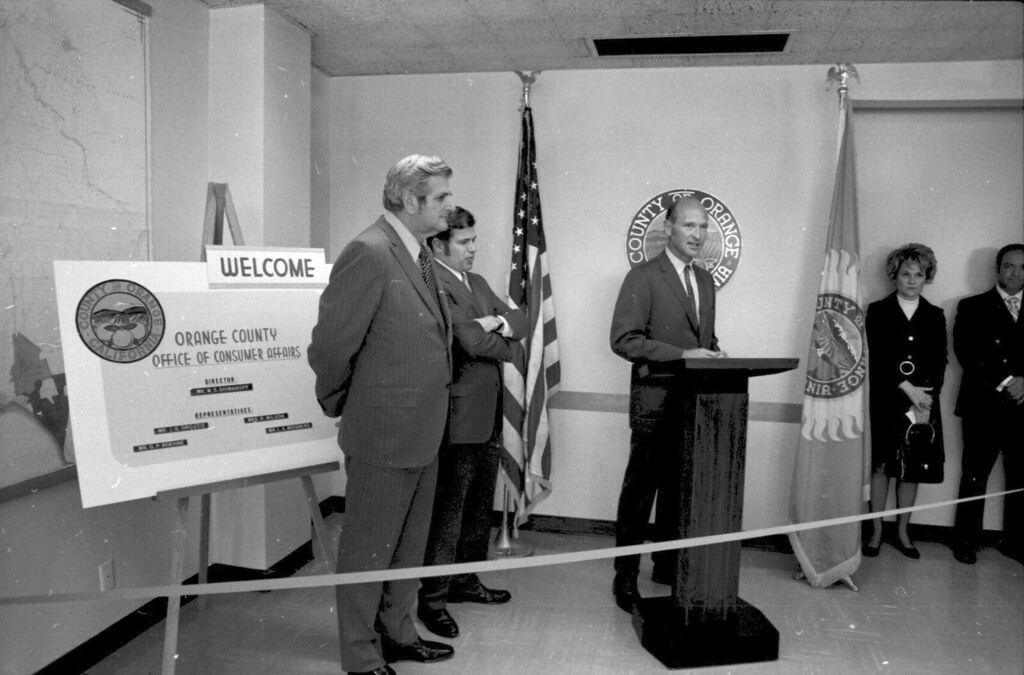
4. **Navigating New Rules: FTC’s Stance on Unfair or Deceptive Fees**The regulatory landscape is constantly evolving to address new forms of consumer deception, and the FTC continues to adapt its rules to protect consumers in specific sectors. A significant development in this regard is a new rule set to come into effect on May 12, 2025, specifically targeting unfair or deceptive fees, particularly within the live-event ticketing and short-term lodging industries. This rule represents a proactive step to combat practices that obscure the true cost of services, ensuring greater transparency for consumers in these often-complex markets.
The core mandate of this regulation is clear: businesses must include all amounts that the customer will be required to pay in the total price presented upfront. This covers processing fees for concert tickets, any costs related to tariffs, inflation, or other market factors that the business passes along. The intention is to provide consumers with an accurate, all-inclusive price from the outset, allowing for informed decisions without the surprise of add-on charges at the final stage of transaction. This empowers consumers with full knowledge of their financial commitment.
However, it’s important to understand what is not covered by this new rule. It explicitly does not apply to taxes or fees charged by the government, nor does it encompass shipping costs. Critically, while shipping costs are excluded, handling costs related to the delivery of goods *must* be included in the total advertised price. The FTC has also published FAQs to provide comprehensive guidance for businesses subject to this rule, ensuring they have the necessary information to comply. For consumers, this signifies a brighter future of transparent pricing, particularly when planning their next concert, game, or vacation.

5. **The California Effect: Strict State Laws on Promotional Pricing**While federal guidelines provide a baseline for consumer protection, the true intensity of promotional pricing enforcement often manifests at the state level. Individual states frequently impose their own, and sometimes significantly stricter, requirements, creating a complex patchwork of regulations that businesses must navigate. This variability means that a discount considered perfectly legitimate in one state might trigger a lawsuit in another, underscoring the importance of understanding jurisdiction-specific consumer protection laws.
California stands out as one of the most heavily regulated markets concerning promotional pricing, earning a reputation for aggressive enforcement. The state’s Unfair Competition Law (UCL) and False Advertising Law (FAL) are powerful instruments used to scrutinize advertising practices, particularly those involving price comparisons. California has seen a disproportionate number of deceptive pricing lawsuits, with many cases hinging on the critical question of whether the “original” or “reference” price was ever genuinely offered to consumers for a substantial period.
Under California’s comparison pricing law, retailers that utilize reference prices in their advertisements or marketing campaigns face stringent guidelines. The most crucial requirement is that any “original” full price mentioned in an ad must be legitimate. If an item was never actually offered for sale at the higher comparison price, or if it was only available at that price for a fleeting, inconsequential period, consumers in California may have strong grounds to file a lawsuit for false advertising. This places a significant burden of proof on retailers to substantiate their discount claims.
Furthermore, when a company cites a comparison price in an advertisement in California, they must be prepared to demonstrate that this was the prevailing market price within the three-month window immediately preceding the publication of the ad. If they cannot meet this specific criterion, the company is then legally obligated to “clearly and conspicuously” indicate the precise date when the former price was actually in effect. Businesses that fail to adhere to either of these detailed requirements expose themselves to considerable consumer litigation, often in the form of potent false advertising claims filed in California courts. Beyond California, states like New Jersey, Oregon, Washington, and Illinois also boast robust consumer protection laws, making them frequent arenas for litigation over promotional pricing disputes.
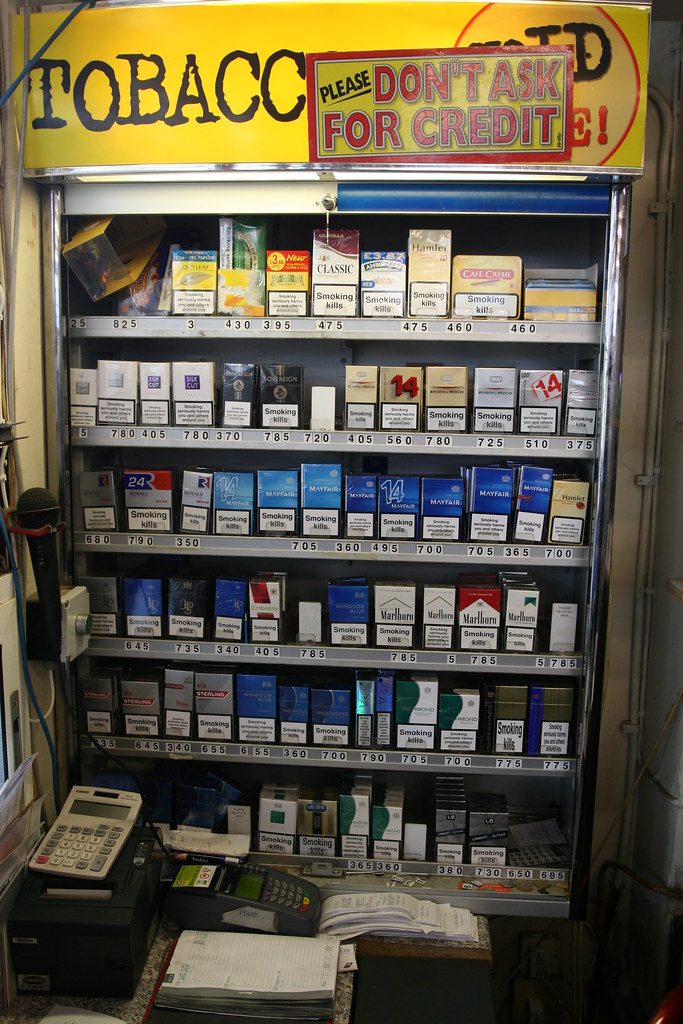
6. **Strikethrough Scrutiny: When Comparison Prices Cross the Line**Strikethrough pricing, also known as compare-at pricing, is a ubiquitous sales and marketing strategy designed to highlight a product’s current, lower ticket price by juxtaposing it against a higher reference price. This reference might be a previous list price, a Manufacturer Suggested Retail Price (MSRP), or even a higher price on similar items sold by competitors. When executed honestly, it can be a transparent way to demonstrate genuine savings. However, the line between effective marketing and deceptive advertising is often blurry, and many retailers have found themselves embroiled in legal battles for crossing it.
The core of the problem arises when retailers employ deceptive discounts that mislead customers. This often involves mentioning an inflated original price in an advertisement, solely to make the current “for sale” price appear significantly more attractive by comparison. This manipulation creates an illusion of a steeper discount than truly exists, fundamentally deceiving consumers about the actual value proposition. The subtle implication is that consumers are receiving a deal on an item that previously commanded a much higher, legitimate price.
There are several ways businesses misrepresent sales prices under this strategy. A company might offer a product at a “perpetual sale price,” meaning it’s merely the regular price that the company is dishonestly presenting as a discounted offer. Another pitfall is carelessly comparing their price to another store’s price without acknowledging that the item offered at the other store is substantially different. Perhaps most commonly, businesses use false reference pricing by comparing their current price to a much higher price from many months or even years earlier, failing to represent a relevant market comparison.
Federal law, primarily enforced by the FTC, has clear guidelines on this. The FTC’s promotional pricing guidelines stipulate that companies citing a former price in their advertisements or promotional materials must use an “actual, bona fide price” that was genuinely offered to the general public “on a regular basis for a reasonably substantial period of time.” This standard aims to prevent the manipulation of pricing history and ensure that advertised discounts are rooted in legitimate prior market conditions. Numerous major retailers have faced lawsuits for these practices, including department stores like Dillard’s, JCPenney, Kmart, Kohls, Macy’s, and Target, as well as auto parts giants like Advance Auto Parts and O’Reilly Auto Parts.
A prominent example of such enforcement is the case against Amazon, where California district attorneys filed a complaint alleging unlawful comparison prices. Amazon’s ads frequently used terms like “Was” or “List” next to higher prices, often with strikethrough lines, to imply savings. However, prosecutors argued these comparison prices were misleading, lacking evidence of being real. Amazon eventually settled the deceptive advertising case for approximately $2 million, agreeing to significant changes in its pricing disclosures, including hyperlinks to define key terms, highlighting the tangible consequences of such practices.

7. **BOGO and Flash Sales: High-Stakes Promotional Pitfalls**Promotional strategies like “Buy One Get One Free” (BOGO) and flash sales are undeniably powerful tools for driving consumer urgency and boosting sales volumes. The immediate gratification of a BOGO deal or the fleeting excitement of a flash sale can quickly sway purchasing decisions. However, beneath their enticing surfaces, these tactics are fraught with legal complexities and have frequently landed companies in significant hot water, proving that even seemingly straightforward promotions require meticulous legal scrutiny.
BOGO deals, in particular, have been a magnet for litigation. According to Consumer Reports, over 150 lawsuits have been filed against dozens of retailers in recent years over misleading BOGO offers. These cases allege that the “free” item or the perceived savings were not as genuine as advertised, perhaps due to inflated base prices or restrictive terms that negated the promotional value. High-profile companies such as Burger King, MyPillow, and VisionWorks have all been named in BOGO lawsuits, demonstrating that no brand is immune to the legal challenges associated with these popular, yet perilous, promotions.
Flash sales, characterized by their short duration and often deep discounts, also present their own set of legal intricacies. While designed to create immediate demand, some states impose specific limits on how long a seller can legitimately advertise, for example, a “going-out-of-business” flash sale. These regulations aim to prevent businesses from perpetually advertising a liquidation event that never truly concludes, thereby misleading consumers about the urgency and finality of the sale. Consumers must be aware that the ticking clock on a flash sale needs to be genuine, not a continuous marketing ploy.
Another common tactic, especially during major shopping events like Black Friday, involves “doorbuster deals.” These heavily advertised items, offered at extremely low prices, often have very limited quantities, leading to quick sell-outs and potential consumer disappointment. While advertising a sale with limited stock is legal in the U.S., retailers bear a crucial responsibility: they must “make clear in its advertisements that quantities are limited, or by offering rain checks on sold-out items.” Failure to do so can lead to accusations of bait-and-switch tactics, where an item is advertised merely to draw customers into the store, without a genuine intent to sell it to all who desire it.
Ultimately, for businesses, the advice is clear: if liability is a concern, BOGO deals are best approached with extreme caution, or even avoided. Flash sales, while less inherently risky, demand absolute transparency regarding quantities and duration. For consumers, the takeaway is to exercise a discerning eye. Always question the underlying value of a BOGO offer and verify the genuine nature of flash sale urgency and stock levels. The goal is to ensure that the excitement of a deal doesn’t overshadow the need for genuine value and fair play, fostering trust between buyers and sellers.
Our journey through the intricate world of consumer protection continues, moving beyond promotional pricing to an equally vital, yet often misunderstood, aspect of retail interaction: a business’s right to refuse service. Just as a vehicle’s handling characteristics are crucial for a smooth ride, understanding the boundaries of this right is essential for a fair marketplace. It’s a nuanced area where a business’s autonomy meets consumer rights, requiring both parties to be well-versed in the legal framework.

8. **A Business’s General Right to Refuse Service: Understanding the Proprietor’s Discretion**At its core, the principle governing a business’s ability to refuse service stems from its status as private property. This fundamental right grants business owners considerable latitude to decline service to individuals for a wide array of reasons, provided those reasons are legitimate and non-discriminatory. It’s akin to a homeowner’s right to decide who enters their premises, albeit with important societal and legal limitations that distinguish it from purely private affairs.
This authority empowers businesses to establish and rigorously enforce their own internal policies, which are crucial for maintaining a safe, orderly, and pleasant environment for both employees and patrons. However, the bedrock of lawful refusal lies in the consistent application of these policies. To be considered legally sound, rules regarding conduct or dress codes, for instance, must be uniformly applied to all customers, without bias or arbitrary exceptions.
Common and perfectly lawful scenarios for refusing service include situations where a customer is causing a disturbance, appears to be intoxicated, or poses a direct threat to the safety and well-being of staff or other shoppers. Policies like the widely recognized “No Shirt, No Shoes, No Service” are classic examples of conduct-based rules that businesses can legitimately enforce, as they are predicated on a customer’s behavior or their adherence to a publicly stated, consistent policy. The emphasis here is squarely on the *action* or *inaction* of the customer, not their inherent identity.

9. **When Refusal Becomes Illegal: Navigating Federal Civil Rights Protections**While businesses enjoy a general right to refuse service, this right is far from absolute. It is firmly circumscribed by federal civil rights laws, which establish clear boundaries designed to protect consumers from discrimination. The moment a business qualifies as a “public accommodation”—a broad category encompassing most establishments open to the public, such as stores, restaurants, and hotels—it cannot deny service based on a customer’s membership in a legally protected class. This distinction is paramount: if the motivation behind the refusal is linked to a customer’s identity rather than their behavior, it crosses into illegal territory.
The landmark Civil Rights Act of 1964 is a cornerstone of these protections, explicitly prohibiting discrimination in public accommodations based on an individual’s race, color, religion, or national origin. This federal statute laid the groundwork for ensuring equal access and treatment for all citizens in commercial spaces, irrespective of these fundamental characteristics. Its enduring impact continues to shape the landscape of consumer rights across the nation, making such forms of discrimination unequivocally illegal.
Subsequent legislation has expanded these critical protections. Title III of the Americans with Disabilities Act (ADA) added disability to the list of protected classes, mandating that businesses make reasonable accommodations and cannot deny service to individuals because of a disability. Furthermore, federal law also extends protection against discrimination based on , ensuring that individuals are not unfairly denied service due to their gender. These laws collectively reinforce the principle that a person’s identity should never be a barrier to accessing goods and services.
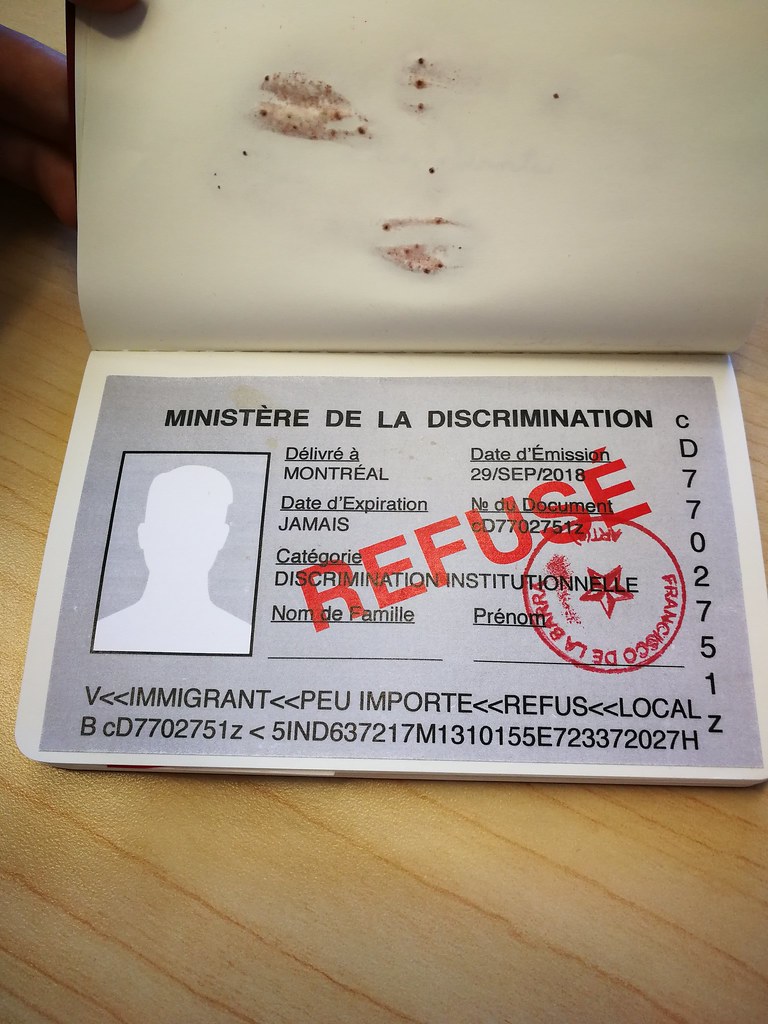
10. **Beyond Federal Law: The Expanding Realm of State and Local Protections**Federal laws provide a crucial baseline of protection that applies universally across the United States. However, these federal statutes do not represent the exhaustive list of civil rights protections available to consumers. Many states, and even individual cities, have taken the initiative to enact their own public accommodation laws, which frequently offer broader and more expansive protections than what is stipulated under federal law. This creates a diverse legal mosaic where a customer’s rights can significantly vary depending on their geographical location.
These supplementary local statutes often introduce additional categories to the roster of protected classes, reflecting evolving societal values and specific community needs. For instance, it is common to find state and municipal laws that extend protection against discrimination based on characteristics such as ual orientation, gender identity, marital status, and age. This means that in many jurisdictions, a business would be in direct violation of the law if it were to refuse to sell an item to a customer solely because of their sexual orientation or because they identify as transgender.
Furthermore, these enhanced protections can even stretch to encompass other characteristics, such as veteran status or an individual’s source of income. This emphasizes the dynamic nature of civil rights legislation, which continually adapts to address new forms of discrimination. For consumers, understanding these localized protections is not just advantageous, it’s essential. Being aware of the specific laws in one’s area empowers individuals to better advocate for their rights and ensures they receive fair treatment, knowing that their local government may offer more robust safeguards than federal law alone can provide.

11. **Legitimate Transactional Denials: When the Sale Itself Justifies Refusal**Distinct from refusals based on customer conduct or unlawful discrimination are instances where a business legitimately denies a sale due to specific aspects of the transaction itself. These are non-discriminatory reasons that relate directly to the legality, integrity, or practical limitations of the sale, rather than to the individual consumer. Understanding these parameters is crucial for both businesses to operate within legal bounds and for consumers to comprehend when a denial is justified.
A common and legally sound reason for refusing a sale involves age-restricted products. If a customer attempts to purchase items like alcohol or tobacco without being able to furnish a valid, unexpired photo identification, the business is not only within its right but often legally obligated to deny the sale. This protects both the business from legal penalties and the community from underage access to restricted goods. The refusal, in this case, is a direct adherence to regulatory requirements, applied neutrally to all individuals attempting such purchases.
Suspicion of fraud also provides a legitimate basis for a transaction-based refusal. Should a customer attempt to use a credit card that appears to be stolen, or offer payment with counterfeit currency, a business has a clear and justifiable reason to halt the transaction. Such actions are designed to prevent financial loss and uphold the integrity of commercial exchanges. In these scenarios, the refusal is a protective measure against criminal activity, not a judgment against the individual.
Further legitimate denials can occur when a customer attempts to purchase an item that is clearly not for sale, such as a display model specifically marked as such, or when they try to exceed clearly posted quantity limits on a particular product. These rules are put in place to manage inventory, ensure fair access for all customers, or maintain the intended sales strategy. In all these instances, the refusal is impersonal and rooted in neutral rules and policies, ensuring legal compliance, preventing financial detriment, and managing operations effectively.

12. **The Walmart Clearance Controversy: Unmasking Hidden Deals and Consumer Frustration**In an era where digital content often reveals hidden truths, a viral video from TikToker Queen Tay (@Queentayshops) brought to light a particularly frustrating scenario for bargain hunters: allegations of Walmart workers deliberately withholding discounted merchandise. This incident, capturing widespread attention, showcased discounted Native body wash, deodorant, and festive stuffed animals, some marked down to as little as one or two dollars. For consumers actively seeking value, these are precisely the kind of deals that spark excitement and drive purchasing decisions.
However, the thrill of discovery quickly turned to disappointment and suspicion for Queen Tay. She alleged that employees at multiple Walmart locations were intentionally moving heavily discounted items to the back of the store and subsequently refusing to sell them to customers. “Just told me that they put everything in the back, and they’re not allowing people to buy it,” she reported in her video, highlighting a practice that, if true, directly thwarts the spirit of genuine promotional pricing and consumer expectation.
This situation touches upon the broader implications of deceptive practices, even if unintentional on the part of the corporation itself. While advertising a sale with limited stock is legal, retailers are legally obliged to “make clear in its advertisements that quantities are limited, or by offering rain checks on sold-out items.” The act of physically hiding available, deeply discounted items and refusing their sale could be interpreted as undermining this transparency, potentially leading to accusations of bait-and-switch tactics or at the very least, creating a highly unsatisfactory customer experience.
Viewer responses to Queen Tay’s revelations mirrored a widespread sentiment of frustration. Many commenters shared their own experiences of finding no marked-down holiday items or discovering that stores had quickly sold out of clearance stock. This collective feedback underscores a significant consumer expectation: when a discount is advertised or implied, there’s a strong desire for genuine access to those savings. Such incidents highlight the importance of consistent and transparent retail practices to maintain consumer trust and avoid accusations of unfair play, which can quickly spread through digital channels and damage a brand’s reputation.
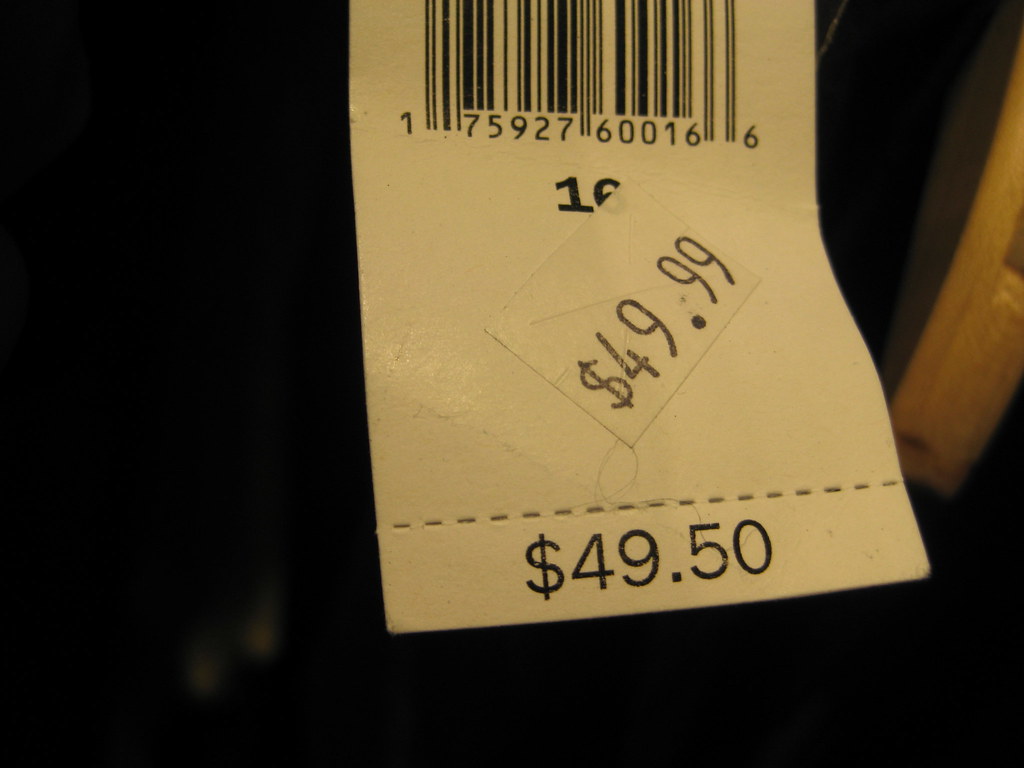
13. **Broader Consumer Protection: Recognizing and Reporting Deceptive Pricing**The landscape of retail, while often a source of great deals, is also riddled with potential pitfalls from deceptive pricing tactics. Empowering yourself as a consumer means developing a keen eye for these maneuvers and understanding your options when you encounter them. It’s not just about finding a bargain; it’s about ensuring that every transaction is built on a foundation of genuine value and fair play, protecting your wallet from artificial inflation and misleading claims.
One crucial step is to scrutinize any “was/now” or strikethrough pricing. Remember the FTC’s guidance: a past price must have been a bona fide, regular selling price for a reasonable period. If a deal seems too good to be true, or if the “original” price appears unusually high, it warrants a closer look. Question whether the reduction is truly significant and meaningful, or if it’s based on a fleeting, inflated past price designed solely to create a false sense of urgency and savings.
Similarly, “free” offers, while enticing, demand careful review of their terms and conditions. The FTC mandates clarity and conspicuousness for all prerequisites, leaving no room for misunderstanding. Before committing, actively seek out and read the fine print. Is the “free” item contingent on purchasing another product at an inflated price? Are there hidden fees or mandatory subscriptions? A truly “free” item should enhance value without undisclosed obligations, and understanding this distinction is your best defense against cleverly disguised conditional sales.
When you suspect deceptive pricing or unfair practices, especially given the FTC’s less direct federal enforcement of its Guides Against Deceptive Pricing, your voice as a consumer becomes incredibly powerful. You have the option to report such instances to individual state regulators, who often have stricter requirements and are more aggressive in their enforcement actions. Furthermore, in cases of widespread deception, joining class action lawsuits can hold retailers accountable and seek restitution for many consumers who were misled, reinforcing the collective power of an informed consumer base.
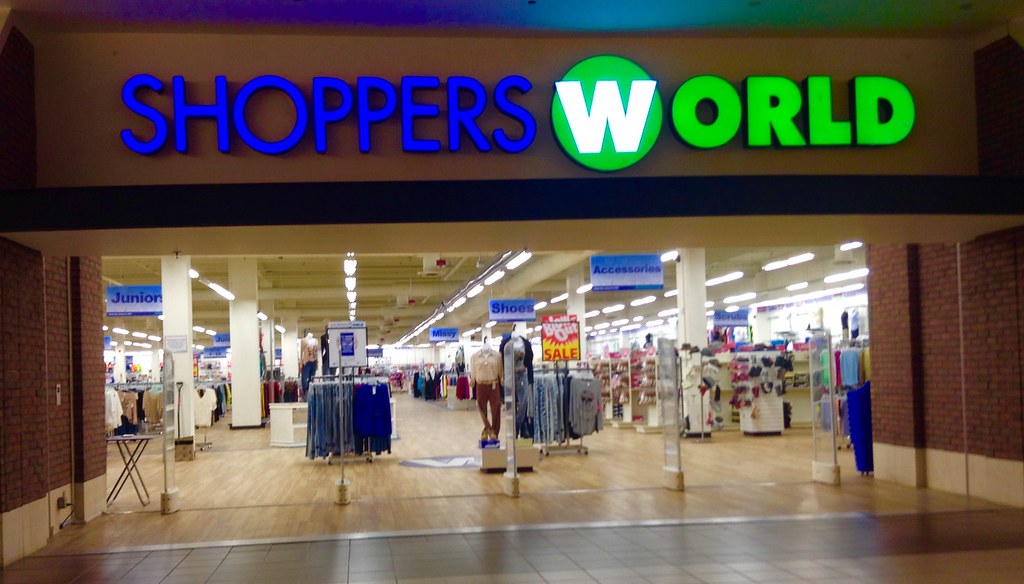
14. **Navigating the Market: Your Rights as a Savvy Shopper**In the dynamic and often complex marketplace, being a savvy shopper extends far beyond simply finding the lowest price. It encompasses a comprehensive understanding of both your rights regarding fair pricing and the legitimate boundaries of a business’s right to refuse service. This dual knowledge equips you with the confidence to make informed purchasing decisions and to navigate any retail interaction with clarity and assurance, much like an experienced driver confidently handles any road condition.
The insights we’ve explored—from the foundational FTC guidelines against deceptive pricing to the nuances of state-specific consumer protection laws and the intricacies of a business’s refusal-of-service rights—are not merely legal technicalities. They are essential tools for empowerment. They enable you to critically evaluate promotional claims, identify genuine value, and recognize when an offer might be strategically designed to mislead rather than genuinely benefit you.
Furthermore, being aware of the distinctions between lawful and unlawful service denials allows you to differentiate between legitimate transactional issues (like age restrictions or suspected fraud) and potential discrimination based on protected characteristics. This discernment ensures that you are treated fairly, and it provides a pathway for recourse if your rights are violated. It underscores that while businesses have autonomy, that autonomy operates within a framework of legal and ethical responsibilities towards every customer.
Read more about: Buying a Used Car? These Certified Pre-Owned Programs Offer Unbeatable Value for Smart Shoppers
Ultimately, protecting yourself in the modern marketplace requires vigilance, a healthy dose of skepticism, and the willingness to question. Always verify, scrutinize, and understand the full implications of an offer or a refusal. By becoming an informed and engaged consumer, you not only safeguard your own interests but also contribute to a fairer and more transparent retail environment for everyone. Just as you wouldn’t hit the road without checking your gauges, don’t enter a transaction without understanding your rights and the rules of the road.

